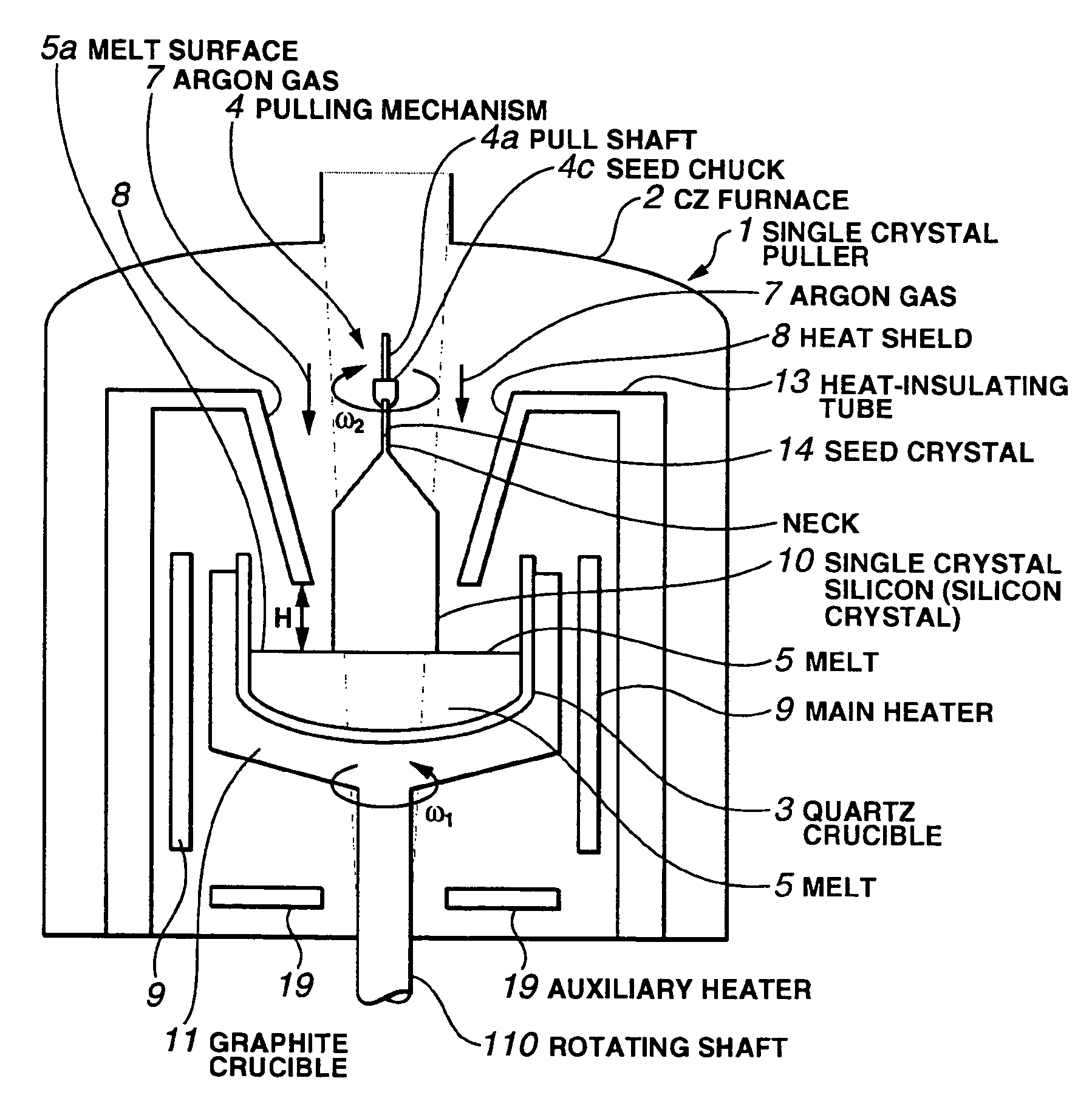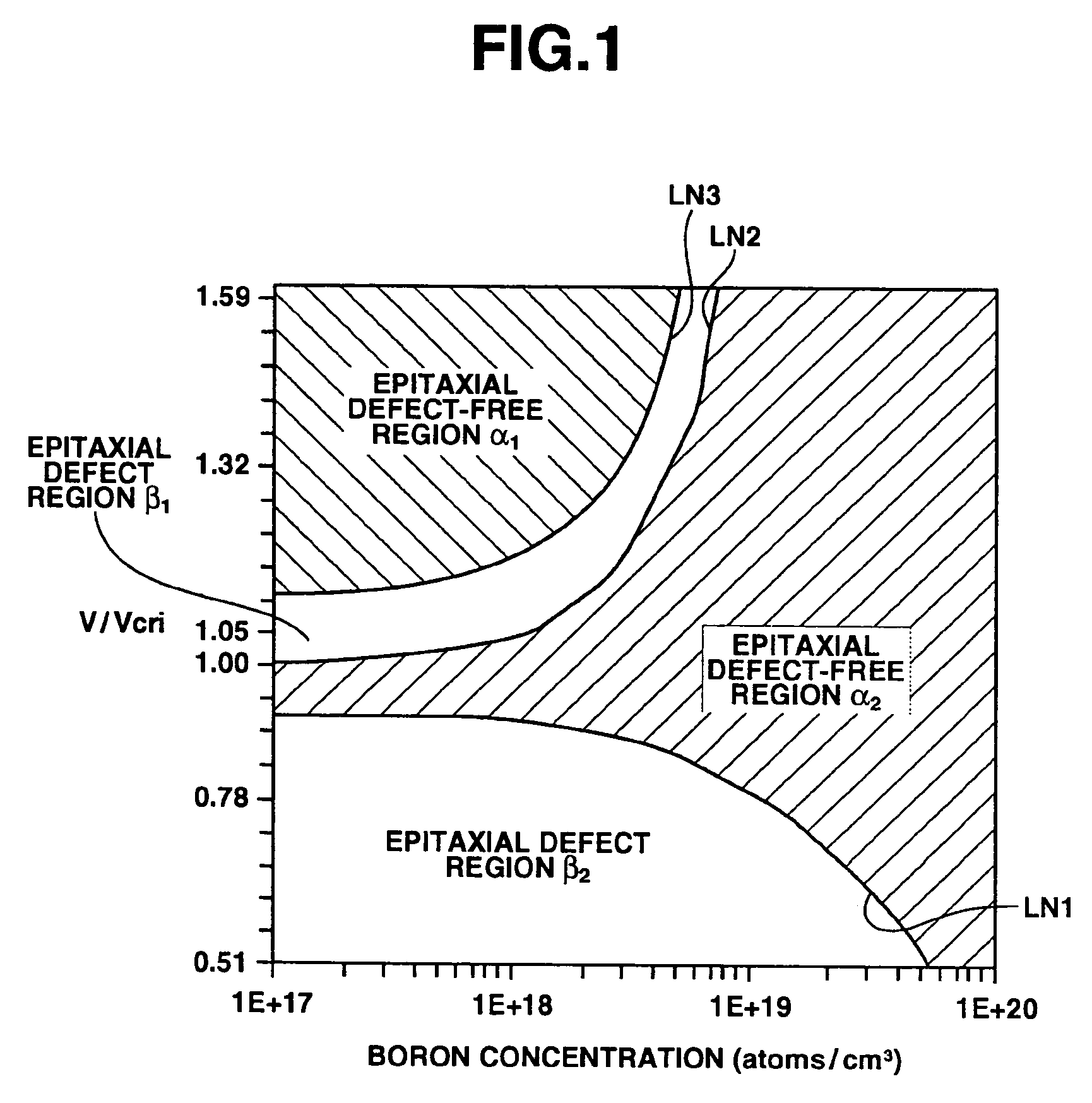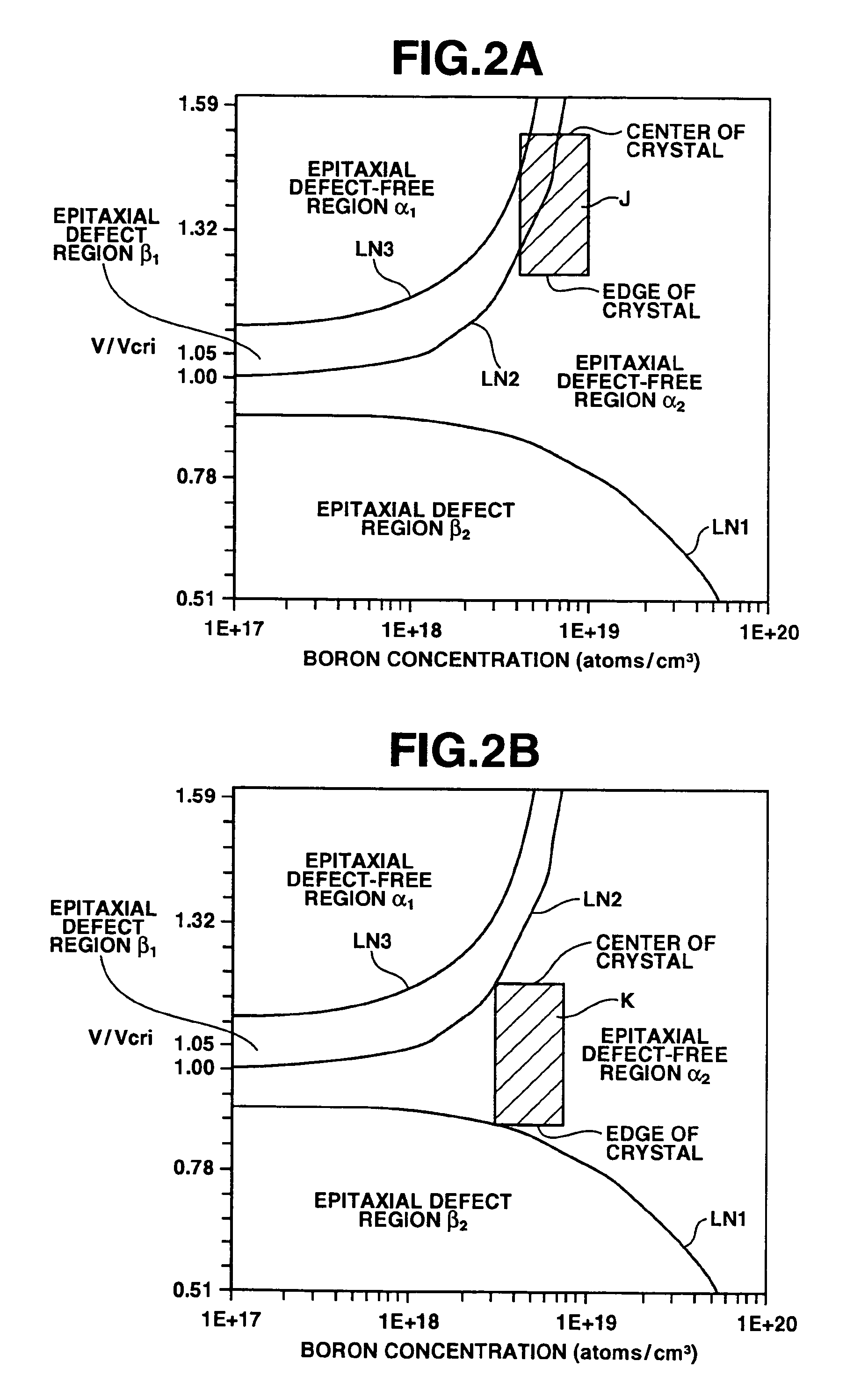Method for producing silicon wafer
a technology of silicon wafers and silicon wafer substrates, applied in the direction of polycrystalline material growth, crystal growth process, protective fluid, etc., can solve the problems of increased production yield, increased production cost, and increased production cost. , to achieve the effect of high pull rate, good yield and increased production yield
- Summary
- Abstract
- Description
- Claims
- Application Information
AI Technical Summary
Benefits of technology
Problems solved by technology
Method used
Image
Examples
Embodiment Construction
[0068]Embodiments of the silicon wafer production methods of the invention are described below in conjunction with the attached diagrams.
[0069]FIG. 4 is a side view showing the construction of a silicon crystal production apparatus such as may be used in the embodiments of the invention.
[0070]Referring to FIG. 4, a single crystal puller 1 according to this embodiment has a CZ furnace (chamber) 2 as the single crystal pulling enclosure.
[0071]Inside the CZ furnace 2, there is provided a quartz crucible 3 which melts the polysilicon starting material and holds it as a melt 5. The quartz crucible 3 is covered on the outside with a graphite crucible 11. A main heater 9 which heats and melts the polysilicon starting material inside the quartz crucible 3 is provided outside of and lateral to the quartz crucible 3. Below the quartz crucible 3, there is provided an auxiliary heater (bottom heater) 19 which additionally heats the base of the quartz crucible 3 to prevent solidification of the ...
PUM
| Property | Measurement | Unit |
|---|---|---|
| thickness | aaaaa | aaaaa |
| thickness | aaaaa | aaaaa |
| temperature | aaaaa | aaaaa |
Abstract
Description
Claims
Application Information
 Login to View More
Login to View More - R&D
- Intellectual Property
- Life Sciences
- Materials
- Tech Scout
- Unparalleled Data Quality
- Higher Quality Content
- 60% Fewer Hallucinations
Browse by: Latest US Patents, China's latest patents, Technical Efficacy Thesaurus, Application Domain, Technology Topic, Popular Technical Reports.
© 2025 PatSnap. All rights reserved.Legal|Privacy policy|Modern Slavery Act Transparency Statement|Sitemap|About US| Contact US: help@patsnap.com



